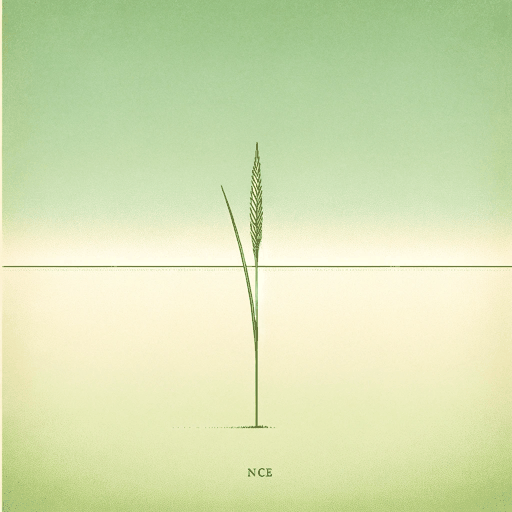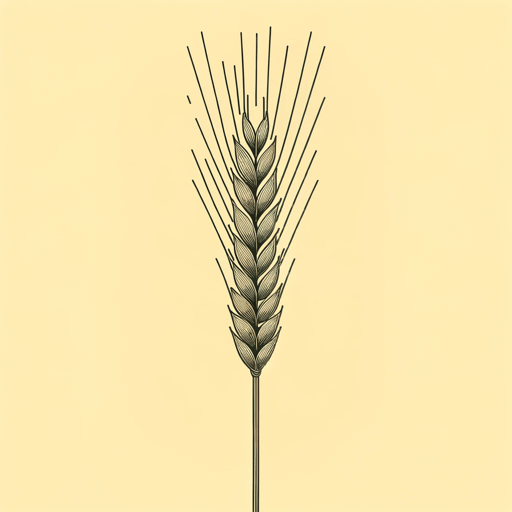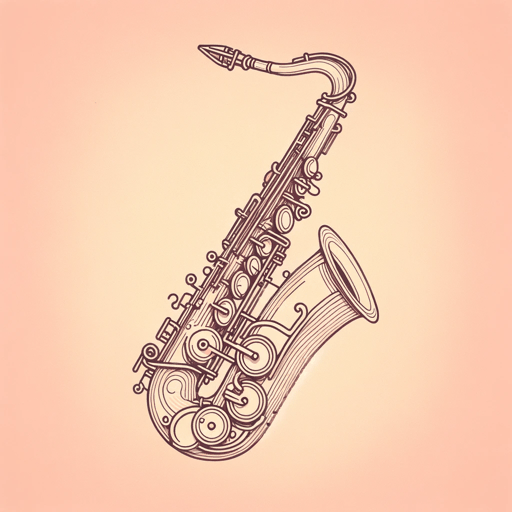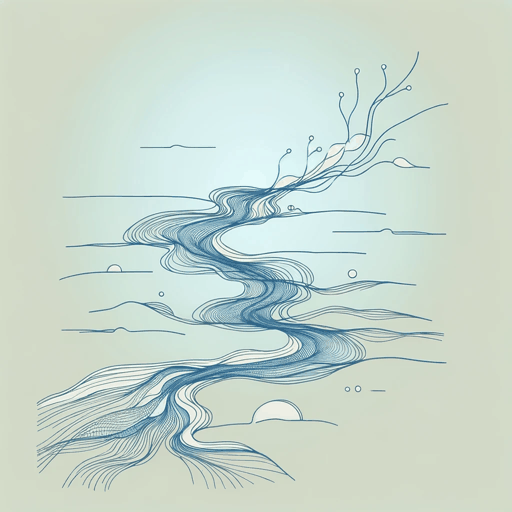19 pages • 38 minutes read
Carl SandburgGrass
Fiction | Poem | Adult | Published in 1918A modern alternative to SparkNotes and CliffsNotes, SuperSummary offers high-quality Study Guides with detailed chapter summaries and analysis of major themes, characters, and more.
Summary and Study Guide
Overview
“Grass” (1918), published in the immediate aftermath of World War I, reflects the shellshocked response of a lost generation of artists—writers, composers, painters—horrified by the sheer brutality and existential pointlessness of the war, something so catastrophic that it was called The War to End All Wars.
Long before he would become a national celebrity, Carl Sandburg, with his bowtie, his unruly shock of snow-white hair, and his ever-present guitar, the new-age Walt Whitman whose aspirational free verse celebrated the fierce will and the optimistic spirit of democracy, was an angry, idealistic Modernist who here offers a darkly ironic meditation on human history. War to war, century to century, humanity fails to learn the simple lesson that war solves nothing.
The poem, with haiku-like brevity, indicts humanity for allowing itself to forget its own history, prescient given that within 15 years the same nations would commence yet another world war, this one with even more dire implications. Using as speaker the grass that eventually grows over even the bloodiest battlefields, forever obscuring the horrors that unfolded there, Sandburg investigates the irony of history, how the more we learn, the more we inevitably forget about the dead-end logic of war.
Poet Biography
Carl August Sandburg was born January 6, 1878, to first-generation Swedish immigrant parents in Galesburg, a railroad center in west central Illinois known for its working-class European immigrant neighborhoods. In eighth grade, Sandburg left school to help support the family—he had six siblings. He worked for a time in construction and then in food service. When he was 20, Sandburg enlisted in the Illinois Volunteer Guard to fight in the Spanish-American War. He saw limited action in Puerto Rico (the war barely lasted six months).
Returning from the war restless and ambitious, Sandburg, despite never finishing high school, enrolled in Lombard College, a small Christian college in Galesburg that Sandburg had heard about from other Illinois soldiers during the war. Although he did not complete his degree, Sandburg began to study poetry and, in turn, began to write his own verse. Leaving college, Sandburg worked briefly as a kind of traveling salesman, working the Mid-Atlantic from Wisconsin to Pennsylvania. In 1908, Sandburg became politically active, working for the Social-Democrat Party in Wisconsin, attracted by its aggressive and vocal support for the working class.
In 1912, Sandburg, now married, moved to Chicago, where he worked as a journalist for both mainstream newspapers and underground, more politically charged publications. But it was poetry that most interested him. He continued experimenting with the open-verse freedoms that Walt Whitman had pioneered. His poems began appearing in prominent Chicago literary journals, part of the burgeoning Chicago literary scene, a renaissance that would come to include Theodore Dreiser, Booth Tarkington, Edgar Lee Masters, Hamlin Garland, and Sherwood Anderson, whose works, like Sandburg’s poetry, explored the all-but-vanishing rural culture of the Midwest that epitomized, at least for Sandburg, the rich spirit of America.
Sandburg’s first collection, Chicago Poems, appeared in 1916. It generated enthusiastic response because of Sandberg’s mastery of free verse and the conversational elegance of his poetic lines. He was immediately likened to Whitman. Sandburg’s second collection, Cornhuskers (1918), in which “Grass” first appeared, catapulted Sandburg into national attention, winning the Pulitzer Prize. Ever restless and curious, in the 1920s, Sandburg started researching the life of Abraham Lincoln, a fellow Midwesterner whose existential mindset, haunted soul, pacifist beliefs, and deeply spiritual intellect resonated with Sandburg. Lincoln would become a nearly two-decades-long labor of love. Sandburg would publish in total a towering four-volume biography, which would earn Sandburg his second Pulitzer.
In the 1930s, as part of his own exploration of the American character as personified by the working class of his beloved Midwest, Sandburg began gathering American folk songs and ballads, championing the music of America’s rural cultures. Indeed, in the 1950s, Sandburg became something of a multimedia celebrity, bringing his infectious love of the American songbook to radio and then television, as well as to the stage, where he would sing folk songs and recite his own poems. He never stopped publishing poetry. His 1950 Complete Poems, a national best-seller, brought Sandburg his third Pulitzer.
For the last two decades of his life, Sandburg lived on a farm of 200-plus acres outside the historic village of Flat Rock in the Blue Ridge Mountains of western North Carolina. Just weeks after his death on July 22, 1967, at the age of 89, a public memorial was held at sunset at the Lincoln Memorial, where more than 7,000 people gathered to hear President Lyndon Johnson, among other dignitaries and artists, describe Sandburg as the Poet of the People and the Whitman of the 20th century, a man who gave voice to America’s energy, hope, and optimism.
Poem Text
Pile the bodies high at Austerlitz and Waterloo.
Shovel them under and let me work—
I am the grass; I cover all.
And pile them high at Gettysburg,
And pile them high at Ypres and Verdun.
Shovel them under and let me work.
Two years, ten years, and passengers ask the conductor:
What place is this?
Where are we now?
I am the grass.
Let me work.
Sandburg, Carl. “Grass.” 1918. Poetry Foundation.
Summary
The speaker opens by commanding some unnamed agency—as it turns out, humanity itself—to go ahead and “[p]ile the bodies high” (Line 1) at Austerlitz and Waterloo. The two places are European towns that marked critical military showdowns in the rise and then fall of the early-19th-century French field general and dictator Napoleon Bonaparte (1769-1821).
Unimpressed by that reality, however, the speaker urges the bodies be unceremoniously buried—“Shovel them under” (Line 2). It is then revealed that the speaker of the poem is not a person at all but rather the grass that will, in time, come to cover both battlefields: “I am the grass; I cover all” (Line 3).
The speaker/grass then turns to wars closer and more familiar to Sandburg’s contemporary readers. First, in Line 4, the grass speaks of the tipping-point battle at Gettysburg, Pennsylvania, of the American Civil War. The grass then refers to two battles—“Ypres and Verdun” (Line 5)—from the just-ended war in Europe, World War I.
Despite the staggering death tolls of those battles, grass, the speaker, assures that within two years, at most ten, passengers on trains moving past either battlefield will be unimpressed—“What place is this? / Where are we now?” (Lines 8-9). Their bloody histories will be forgotten as grass covers the battlefields, making them once again nondescript country fields, the piles of casualties buried, the battles themselves slipping into obscurity.
The poem closes with the grass, deadpan and unemotional, demanding to be let alone to do its work of covering the dead, attending to the serious business of simply, quietly, erasing the horror of war: “I am the grass / Let me work” (Lines 10-11).
Related Titles
By Carl Sandburg




